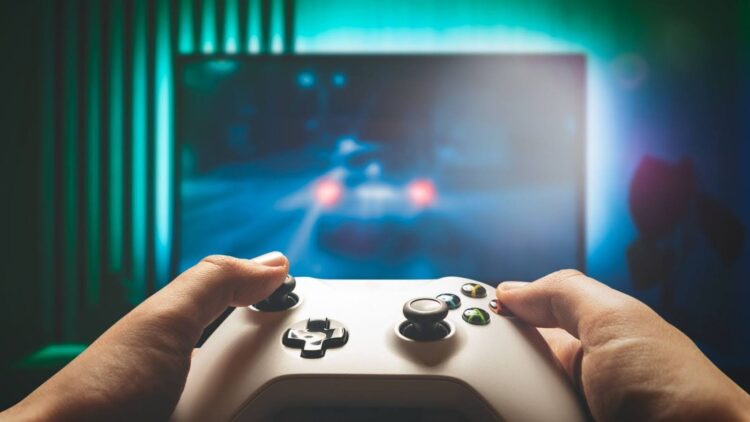Advancements in AI poker systems like Libratus and Pluribus have demonstrated sophisticated bluffing capabilities that surpass human players. These AI systems have greatly impacted human strategies by showcasing aggressive bluffing and value betting tactics. AI training tools provide insights into optimal game theory strategies and aid players’ bluffing techniques. The application of these strategies extends beyond traditional poker. Competitive video gaming benefits from similar psychological tactics. Players in online poker often manipulate their perceived strategies and behavioral cues. This can be mirrored in the virtual arena to mislead competitors, applying a layer of psychological warfare to gaming.
Bluffing Mechanisms in Poker and Gaming
Bluffing in online poker is a deliberate effort to make opponents with better hands fold. Research shows that bluffing is a psychological and mathematical technique. Factors such as hand volatility and specific game situations influence its effectiveness. Findings indicate that players who bluff more frequently tend to win more games.
Bluffing necessitates understanding psychological tactics to manipulate opponents’ perceptions and decisions in poker. For example, in games like Legends of Runeterra, players might pretend to cast a spell and then withdraw it, creating uncertainty and forcing opponents to second-guess their decisions. Similarly, in first-person shooters (FPS) like Call of Duty, players may feign a retreat to lure opponents into a vulnerable position, only to ambush them unexpectedly. Such tactics require an understanding of game mechanics and the ability to anticipate opponents’ reactions. Bluffing in both poker and video gaming revolves around creating a false narrative, making opponents believe in actions that differ from reality.
Psychological Underpinnings and Practical Applications
Successful bluffing in poker involves managing the fear of getting caught and leveraging opponents’ perceptions. This technique extends to various competitive environments, such as online multiplayer games, where players can use deception through emotes or in-game communication tools. For instance, a player might use specific emotes or voice chat inflections to convey false intentions, much like a poker player faking a tell.
Bluffing in video games also incorporates the concept of table image, similar to poker. Players develop reputations based on their playstyles. An aggressive player might suddenly adopt a conservative approach to catch opponents off guard. Conversely, a cautious player might execute a bold move to exploit opponents’ expectations. This manipulation of the perceived playstyle is integral to successful bluffing and can significantly affect the outcome of a match or game.

The integration of AI in poker has provided a rich source of data on optimal bluffing strategies. Gamers can enhance their own approaches in competitive gaming by observing AI-driven bluffing tactics. For example, AI tools have shown that balancing aggressive and conservative tactics can optimize decision-making processes. Esports competitors can use these insights to improve their gameplay in high-stakes situations where psychological manipulation can yield favorable outcomes.
Bluffing Strategies in Different Gaming Genres
Bluffing in poker can be more structured, whereas in video games, bluffing is genre-specific and dynamic. For example, in MOBA (Multiplayer Online Battle Arena) games like Dota 2 or League of Legends, players might fake an attack in one lane to force the opponent to commit resources, then execute a surprise attack in another lane. In battle royale games such as Fortnite or PUBG, players can create false sound cues or build traps to deceive enemies into making wrong moves.
Different genres require players to apply bluffing techniques tailored to specific game mechanics. The nuances of bluffing are highly dependent on how the game is structured, which requires not only knowledge of the game’s mechanics but also an understanding of how opponents interpret and react to false signals.
Risk and Reward in Bluffing Strategies
The effectiveness of bluffing in competitive gaming, similar to poker, relies on balancing risk and reward. A well-timed bluff can turn the tide of a match. A failed bluff can lead to substantial setbacks. Therefore, players must assess the situation, considering factors such as the opponent’s skill level, the current state of the game, and potential consequences of their actions.

The integration of AI poker systems and the global growth of esports betting markets underline the present-day relevance of strategic bluffing. The cross-application of bluffing techniques from poker presents an opportunity for gamers to enhance their strategic approaches. The combination of psychological insights and practical applications derived from poker offers a robust framework for understanding and implementing bluffing tactics in competitive gaming. Moreover, esports tournaments and high-stakes gaming environments present opportunities for bluffing to be employed as a risk-based strategy, similar to how it’s used in professional poker tournaments.
Conclusion
Bluffing techniques, refined and perfected in poker, have proven highly adaptable to the world of competitive video gaming. As esports continues to grow in prominence, the application of psychological manipulation becomes an increasingly critical tool for success. Whether in MOBA, FPS, or card-based strategy games, bluffing adds an extra dimension of strategic depth that can often make the difference between victory and defeat. The balance of risk and reward inherent in bluffing mirrors the poker table, and as gaming evolves, so too will the art of deception, offering a tactical edge to players who master this skill.






